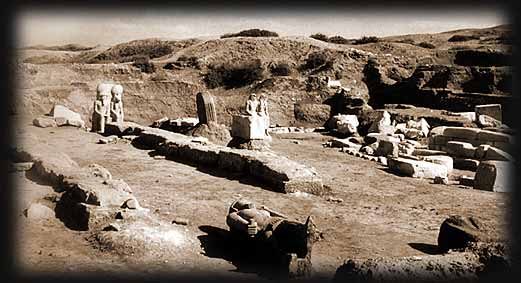 |
 |
 |
 |

Buto (modern name of Tell el-Fara'in), is a site south of Tanis in the Egyptian Delta, its importance stems from the Predynastic period when it was the capital of Lower Egypt (in this function it symbolically represented all of Northern Egypt, just as Hierakonpolis represented the South - in this capacity Buto can be identified with the semi-mythical Predynastic capitals of Lower Egypt 'Pe and Dep'). The city now comprises of three mounds (these mounds were once two towns and a temple complex), the occupation stretched from the Predynastic period up to the Roman Period).
The site was first identified by Flinders Petrie in 1888, although it was not to be systematically excavated until the 1960's - but only evidence was found dating to the Late Period, Ptolemaic Period and Roman Period - the possible occupation going back as far as the Predynastic Period was thought to have been a myth.
The first evidence of Predynastic occupation at Buto was only first uncovered in the 1980's by Thomas von der Way, he had to dig down in some places 7m (23ft) to find this evidence. The archaeology found shows that Buto was occupied for 500 years during the Predynastic Period, but perhaps most interestingly the pottery found shows how the northern people first influenced by the style of the southern pottery, but after 100 years the northern culture is swallowed into the Southern culture - this then supports the theory that Lower Egypt was taken over by the Upper Egypt (by force or by peace is not known).
